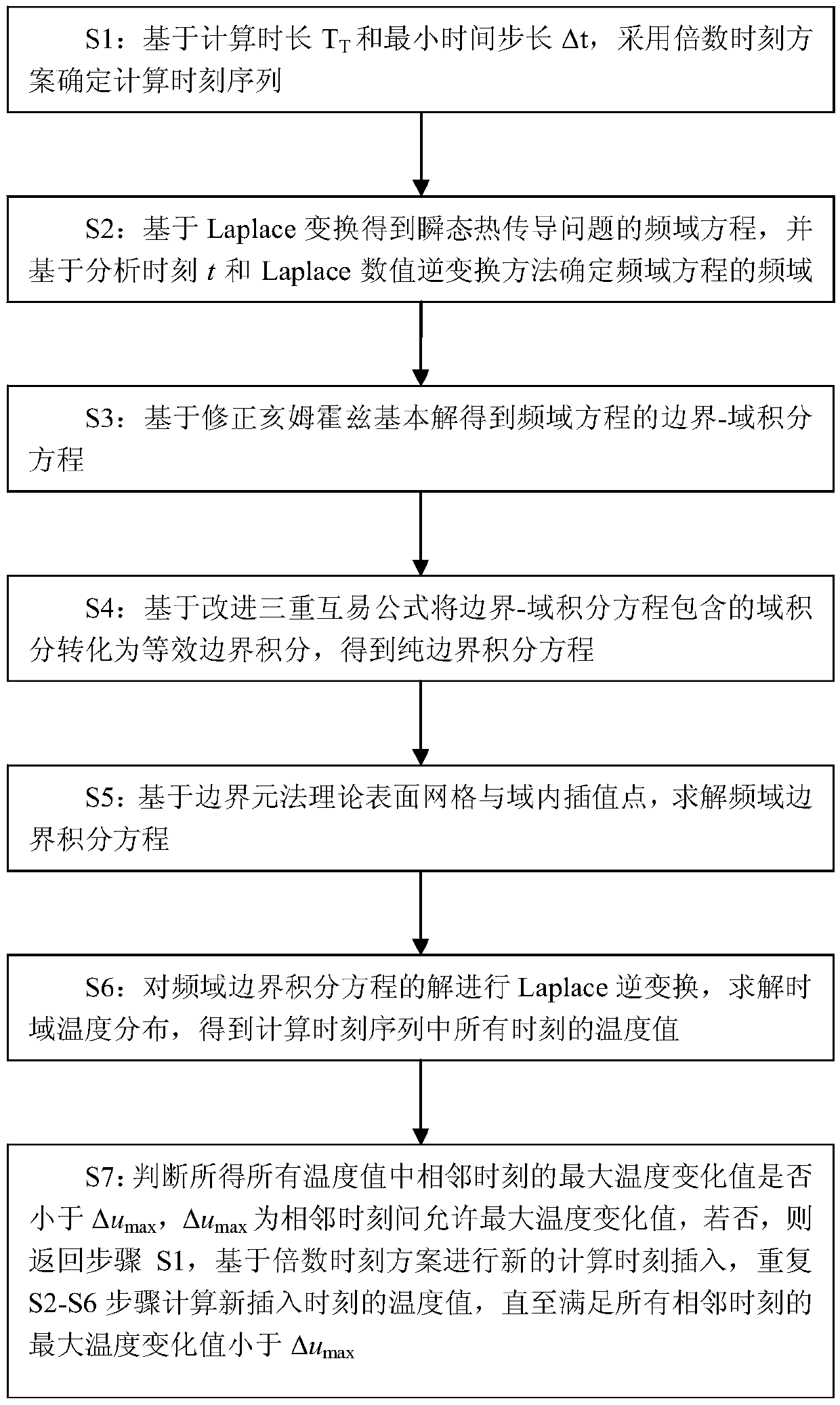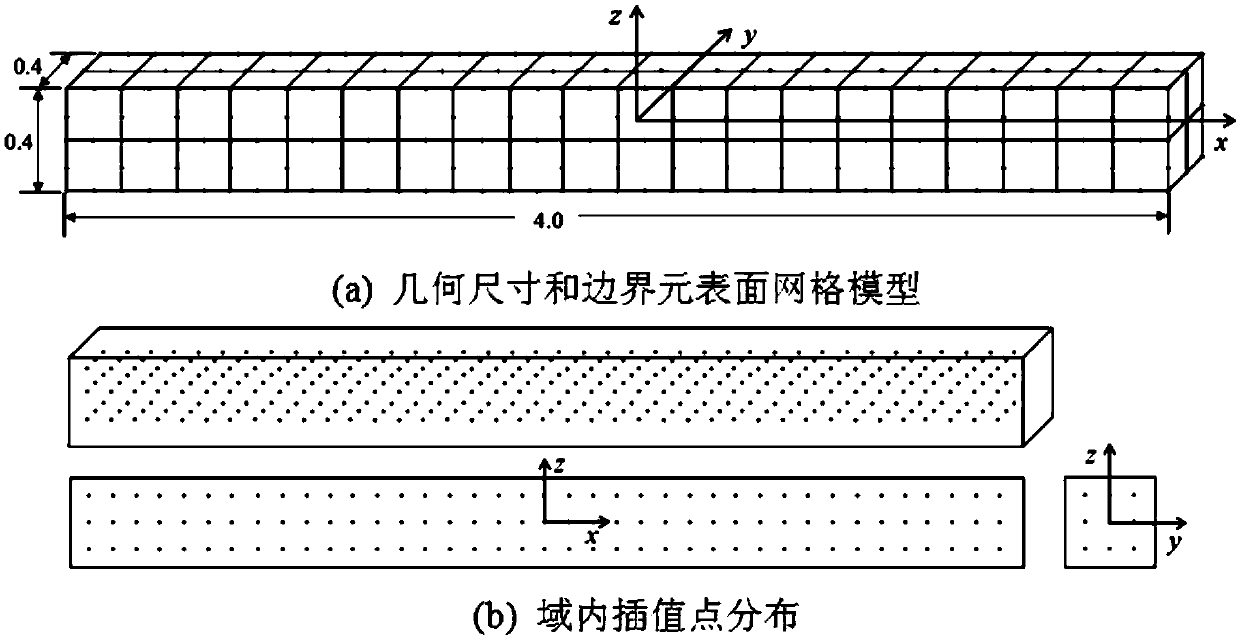Transient temperature calculation method based on improved triple reciprocal boundary element method
A boundary element method, transient temperature technology, applied in the direction of calculation, design optimization/simulation, special data processing applications, etc., can solve the problem that the calculation efficiency needs to be improved, reduce the dimensionality reduction advantages of the boundary element method, increase the memory space and calculation time, etc. question
- Summary
- Abstract
- Description
- Claims
- Application Information
AI Technical Summary
Problems solved by technology
Method used
Image
Examples
Embodiment
[0207] consider as image 3 The geometric model shown, its transient temperature analytical field is
[0208] u(x,y,z,t)=x 6 +30x 4 t+180x 2 t 2 +y 2 +z+120t 3 +2t
[0209] The given initial temperature field is
[0210] u0 =x 6 +y 2 +z
[0211] Thermal diffusivity a = 1m 2 / s, given the Newman boundary conditions in the analysis, solve the transient temperature distribution. The temperature value calculated in the analysis is compared with the analytical solution, and the error calculation formula is as follows:
[0212]
[0213] in represents the numerical solution obtained by the method in this paper, Analytical solution to the problem.
[0214] Given that the analysis time range is 10s and the minimum time step is 0.2s, based on the multiple time scheme, the preliminary calculation time sequence to be obtained is {0.2, 0.4, 0.6, 0.8, 1.0, 1.2, 1.6, 2.0, 2.4, 3.2 ,4.0,4.8,6.4,9.6}, the unit is second.
[0215] Boundary element analysis is carried out f...
PUM
 Login to View More
Login to View More Abstract
Description
Claims
Application Information
 Login to View More
Login to View More - R&D
- Intellectual Property
- Life Sciences
- Materials
- Tech Scout
- Unparalleled Data Quality
- Higher Quality Content
- 60% Fewer Hallucinations
Browse by: Latest US Patents, China's latest patents, Technical Efficacy Thesaurus, Application Domain, Technology Topic, Popular Technical Reports.
© 2025 PatSnap. All rights reserved.Legal|Privacy policy|Modern Slavery Act Transparency Statement|Sitemap|About US| Contact US: help@patsnap.com



